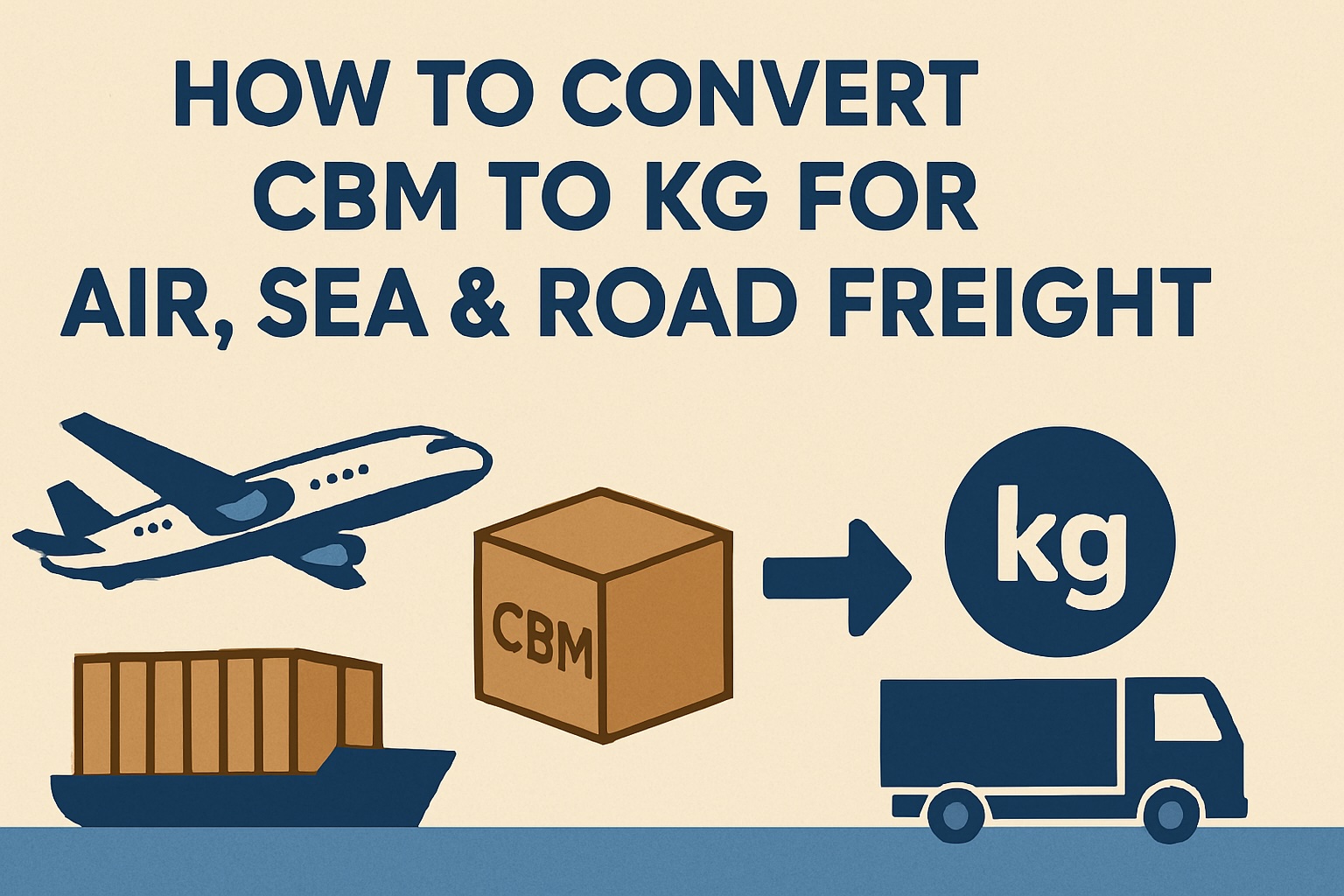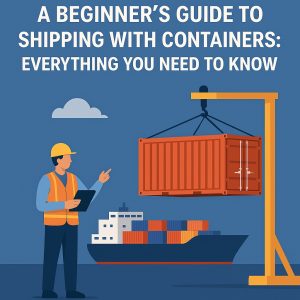Converting CBM (cubic meters) to KG (kilograms) is essential for determining shipping costs, avoiding surprises, and optimizing cargo space. However, air, sea, and road freight use different rules for this conversion.
In this guide, you’ll learn:
- ✅ Simple formulas for CBM-to-KG conversion
- ✅ How carriers calculate charges for each freight type
- ✅ Real-world examples (with calculations)
- ✅ Pro tips to reduce costs
Why Convert CBM to KG?
Carriers use CBM-to-KG conversion to decide whether to charge you based on:
- Actual Weight (physical weight of the cargo), or
- Volumetric Weight (space your cargo occupies).
The higher value between the two determines your shipping cost.
The General CBM-to-KG Formula
Each freight type uses a different conversion factor:
| Freight Type | Conversion Factor | Formula |
|---|---|---|
| Air Freight | 1 CBM = 167 KG | Volumetric Weight (KG) = CBM × 167 |
| Sea Freight | 1 CBM = 1,000 KG | Chargeable Weight (KG) = CBM × 1,000 |
| Road Freight | 1 CBM = 333 KG | Volumetric Weight (KG) = CBM × 333 |
Note: Air freight uses the IATA standard (167 KG/CBM). Sea freight often uses 1 CBM = 1,000 KG (varies by carrier). Road freight factors depend on regional standards (e.g., 333 KG/CBM in the EU).
Step-by-Step Conversion Guide
1. Air Freight: CBM to KG
Volumetric Weight (KG) = CBM × 167
Steps:
- Calculate CBM: L(m) × W(m) × H(m).
- Multiply by 167.
- Compare to actual weight – higher value is charged.
Example:
- CBM = 0.8
- Volumetric Weight = 0.8 × 167 = 133.6 KG
- Actual Weight = 100 KG
- Charged Weight = 133.6 KG
2. Sea Freight: CBM to KG
Chargeable Weight (KG) = CBM × 1,000
Steps:
- Calculate CBM.
- Multiply by 1,000 to get “revenue ton.”
- Compare to actual weight – higher value applies.
Example:
- CBM = 2.5
- Chargeable Weight = 2.5 × 1,000 = 2,500 KG
- Actual Weight = 3,000 KG
- Charged Weight = 3,000 KG
3. Road Freight: CBM to KG
Volumetric Weight (KG) = CBM × 333
Steps:
- Calculate CBM.
- Multiply by 333 (EU standard).
- Compare to actual weight.
Example:
- CBM = 1.2
- Volumetric Weight = 1.2 × 333 = 400 KG
- Actual Weight = 350 KG
- Charged Weight = 400 KG
Why Do Conversion Factors Vary?
- Air Freight (167 KG/CBM): Planes have limited space; lightweight, bulky cargo costs airlines more.
- Sea Freight (1,000 KG/CBM): Ships prioritize space over weight (1 CBM ≈ 1 ton).
- Road Freight (333 KG/CBM): Balances truck space and weight limits.
5 Common Mistakes to Avoid
- Using the wrong factor (e.g., applying air freight rates to sea shipments).
- Ignoring pallet dimensions – include pallet height in CBM.
- Forgetting to round up – carriers often round to the nearest 0.5 KG.
- Mixing units – always use meters for CBM.
- Assuming all carriers use the same factor – always confirm rates!
Pro Tips to Reduce Shipping Costs
- Air Freight: Minimize package dimensions (use compact boxes).
- Sea Freight: Maximize container space (stack uniformly).
- Road Freight: Opt for denser cargo to avoid volumetric charges.
- Compare carriers: Some offer lower CBM-to-KG ratios.
FAQs
Q: Can I use the same formula for all freight types?
A: No! Air, sea, and road use different factors (167, 1,000, and 333).
Q: How do I convert KG to CBM?
A: Reverse the formula:
- Air: CBM = KG / 167
- Sea: CBM = KG / 1,000
Q: Why do some sea carriers use 1 CBM = 500 KG?
A: It depends on cargo type. Heavy items (steel, machinery) may use lower factors.
Final Thoughts
Always double-check conversion factors with your carrier. For mixed shipments, calculate both CBM and actual weight to avoid overpaying. Bookmark this guide or share it with your logistics team!

